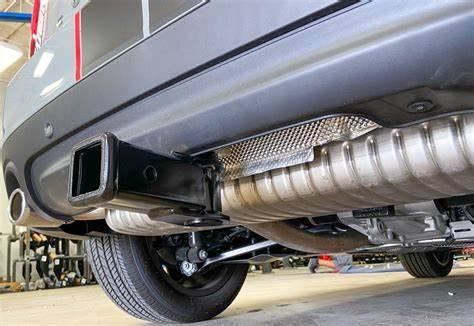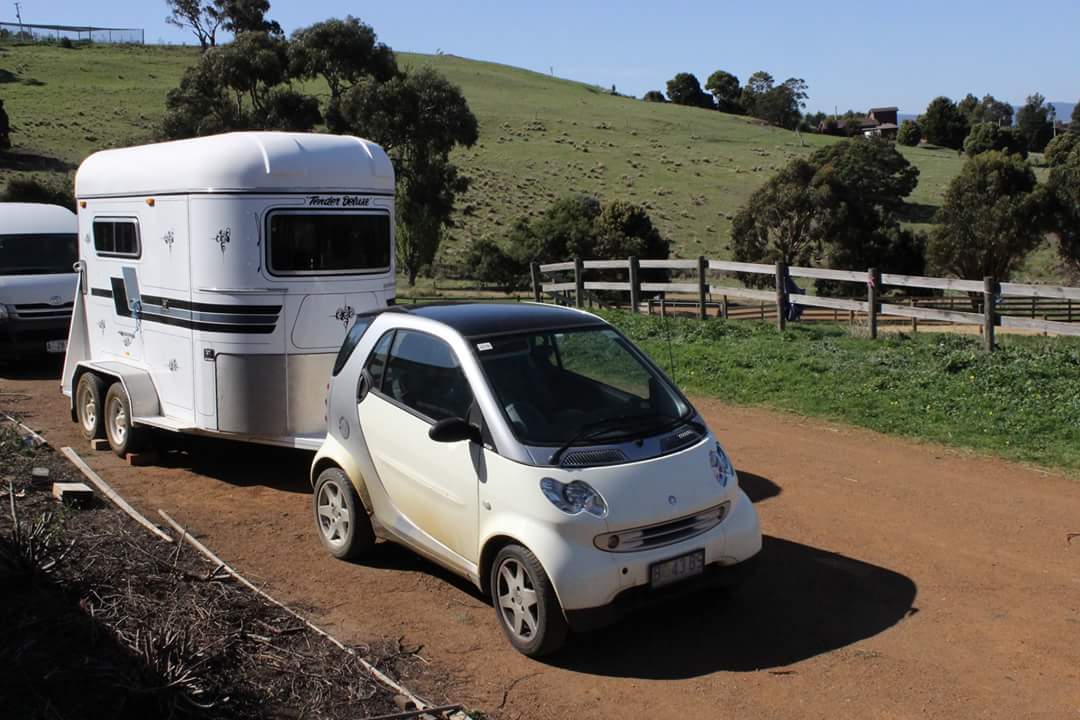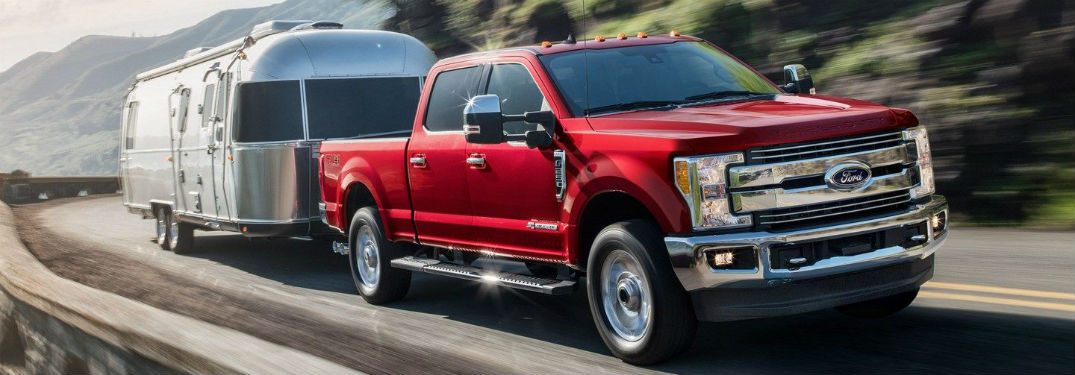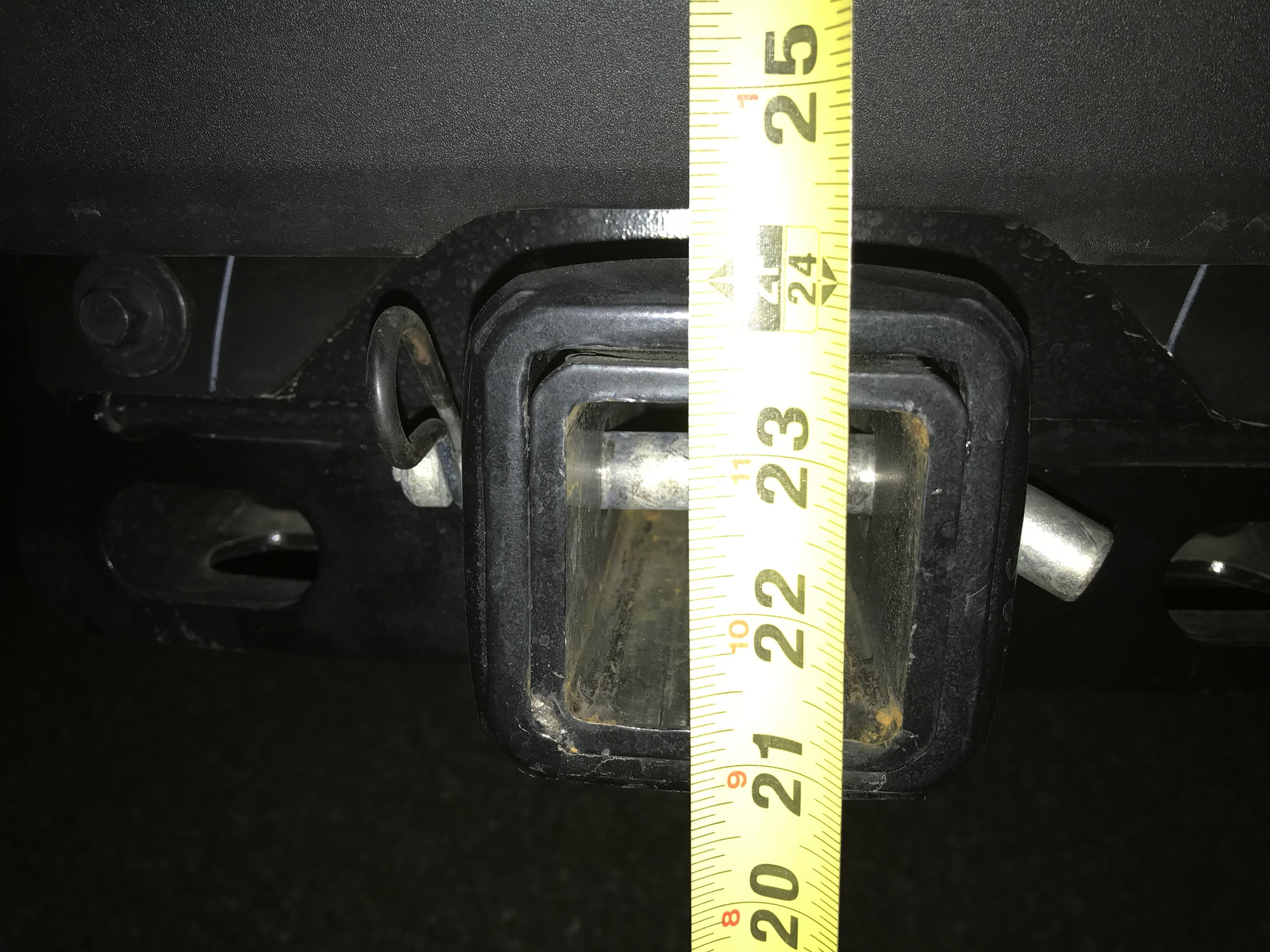Hitch Receiver Sizes Explained
There are many people who never even consider the towing capability of their cars but most vehicles have some sort of ability to tow if called upon. An important part of that is the tow hitch receiver. We are going to take a closer look at just what that is and how it can be used to help you tow.
What Is a Tow Hitch Receiver?
You will not find one of these on all cars, sometimes it is something you will have to have fitted but your car will be likely rated for a specific size tow hitch receiver. This is a square opening at the back of the vehicle below the center of the back bumper.

This square opening accepts removable aftermarket hitch mounted accessories. In doing so it attaches the vehicle to some form of trailer or external wheeled accessory that may carry a payload of some description.
What Are the Hitch Receiver Sizes?
There are not many hitch receiver sizes, in fact there are only 4, these are 1-1/4″, 2″, 2-1/2″, and 3″. The measurement refers specifically to the width of the opening on the receiver, not to the receiver as a whole.
Why Are There Different Sizes?
You may be wondering why there is not just one universal size of hitch receiver, surely that would be simpler. Actually there is a good reason for the varied sizes. Different vehicles have different towing strengths so essentially it’s almost as a protection against not overloading your vehicle's capacity.
The weaker vehicles have the smaller hitch receivers which can only accept accessories from lightweight trailers. The stronger vehicles have the larger openings so can accept the heavier towing equipment. The difference may not seem like much overall but when it comes to towing weight there is a vast gulf between the 1 inch and 3 inch hitch receivers.
More on Receiver Sizes and Hitch Classes
The various hitch receiver sizes equate to specific hitch classes that themselves range from 1 to 5. It should be noted these are usually listed using Roman numerals so the range would be I to V. So if you have a 1 inch hitch receiver then a class V or 5 hitch would be too big and subsequently will not fit.
As the table below will illustrate it is important to match the right hitch receiver with the appropriate hitch size. This is to ensure that no damage is done to your vehicle by attempting to exceed its maximum tow rating.
More About 1-1/4” Hitch Receivers
As the table indicates a 1-1/4” hitch receiver can accept a hitch accessory from a class I or II trailer. You will find this kind of receiver on an average sized car, small SUV or even some smaller vans. It in theory limits the tow load to 1,000 – 2,000 lbs. and the tongue weight maximum is just 100 – 200 lbs.

Note that exceeding the tongue weight can break the connection and cause potential damage to both vehicle and trailer.
More About 2” Hitch Receivers
A 2” hitch receiver goes with trailer accessories from class III and IV. These hitch openings are most commonly found on SUVs, crossovers and smaller trucks such as the Tacoma or Canyon. They can also be found on large cars such as powerful sedans.
If your vehicle is rated to tow something in class III or IV then any hitch receiver already attached or that can be attached would be a 2”. Depending on the vehicle this connection can handle between 3,500 – 12,000 lbs. and a tongue weight of 300 – 1,200 lbs. Ensure you are aware of your vehicle's towing limits.

It should be noted that a reinforced 2” hitch receiver can also be used for class 5 hitches but you must make sure your vehicle is capable of the extra loads involved.
More on the 2-1/2” and 3” Hitch Receiver
We clump these two hitch receiver sizes together because Class V hitches can be in either 2-1/2” or 3”. You will find the 2-12” hitch receivers on the heavy duty trucks with high towing capabilities of between 10,000 to 20,000 lbs.

The tongue weight on these is also increased to 1,000 to 2,000 lbs. which is needed to support the extra strains placed on the connection by heavy weight loads.
The 3” hitch receivers are different from all the others as they are fitted to the C-channel frame rather than the frame of the vehicle like the smaller sized setups. You will find these on dump trailers and flatbed trucks which have to carry higher loads that may reach 25,000 lbs.
How Do You Measure Your Receiver Hitch?
You know there’s a receiver hitch at the back of your vehicle but you don’t know what type it is and if it will work with the trailer you have what can you do? First off don’t panic this one is very easy just grab a tape measure and head out to your vehicle.

You are looking to get a measurement of the space of the tube inside the hitch receiver so measure the distance from the inside edge of one side to the other. It must be only the internal distance of the tube and do not include the thickness of the tube itself. You should get 1-1/4″ (1.25″), 2″, 2-1/2″ (2.5″), or 3″.
Conclusion
There are only a few different sizes of hitch receiver but size is very important when it comes to these towing components. The smaller the receiver the lighter the load it can carry. If your vehicle is rated for a low towing capacity it needs a smaller receiver.
Never overload your vehicle's towing capacity; it can cause major damage that might cost a lot of money to repair.
Link To or Reference This Page
We spend a lot of time collecting, cleaning, merging, and formatting the data that is shown on the site to be as useful to you as possible.
If you found the data or information on this page useful in your research, please use the tool below to properly cite or reference Tow Ratings as the source. We appreciate your support!
-
<a href="http://towratings.net/blog/hitch-receiver-sizes-explained/">Hitch Receiver Sizes Explained</a>
-
"Hitch Receiver Sizes Explained". Tow Ratings. Accessed on April 27, 2024. http://towratings.net/blog/hitch-receiver-sizes-explained/.
-
"Hitch Receiver Sizes Explained". Tow Ratings, http://towratings.net/blog/hitch-receiver-sizes-explained/. Accessed 27 April, 2024
-
Hitch Receiver Sizes Explained. Tow Ratings. Retrieved from http://towratings.net/blog/hitch-receiver-sizes-explained/.